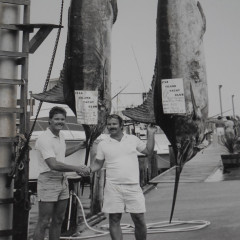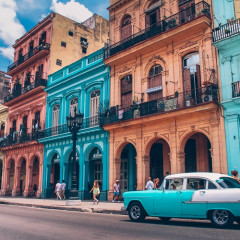 To the left is an artist's rendering of what the Domino Sugar Factory area will look like whenever a just approved, long-delayed construction project is completed. We know what's coming. Time to wonder what might be going.
To the left is an artist's rendering of what the Domino Sugar Factory area will look like whenever a just approved, long-delayed construction project is completed. We know what's coming. Time to wonder what might be going.
Speculation about the development's impact on the neighborhood is admittedly premature. And the $1.5 billion project, encompassing 11 acres and four residential buildings totaling 128 stories (whittled down from an initial 140 after local opposition), is hardly the first major construction to dramatically transform the South Williamsburg waterfront. But it's tempting to see it as completing the glossy high-rise makeover of the strip of land between South 5th and North 6th Streets. And as the nail in the coffin for several nearby hangouts that had stubbornly clung to Williamsburg's bohemian past in the literal shadow of midtownization.
Add to the endangered list:
 DIY music venues: On or just off Kent Avenue between S. 2nd and N. 3rd are four scrappy rock clubs with cheap beer (or glorious BYO policies) that bring in rising talents while redefining intimate concert settings. Glasslands, Death by Audio (right), Monster Island and Secret Robot Project have somehow survived the area's earlier residential booms. But you can't shake the feeling they're already on borrowed time. Yet another infusion of money and construction cranes won't help matters, even if new residents might.
DIY music venues: On or just off Kent Avenue between S. 2nd and N. 3rd are four scrappy rock clubs with cheap beer (or glorious BYO policies) that bring in rising talents while redefining intimate concert settings. Glasslands, Death by Audio (right), Monster Island and Secret Robot Project have somehow survived the area's earlier residential booms. But you can't shake the feeling they're already on borrowed time. Yet another infusion of money and construction cranes won't help matters, even if new residents might.
indieScreen: Newer and sleeker than the proudly shabby clubs, indieScreen faces a smaller threat. But if people actually fill in the Domino plan's 2,200 apartments, a tiny one-screen theater with quirky programming might have to make way for more basic amenities the area still somewhat lacks.
Public waterfront access: Is restricting river access to NYC waterways to people who can afford living on it really the best way to revive the long-neglected waterfront?
In defense of the development, planners have set aside 660 of the 2,200 units for low- and moderate-income tenants. But the best news for these humble existing attractions is bad news for developers past and present: if you build it in recessionary Williamsburg, they probably won't come.


.jpg)
.jpg)



.jpg)
.jpg)
.jpg)


.jpg)
.jpg)
